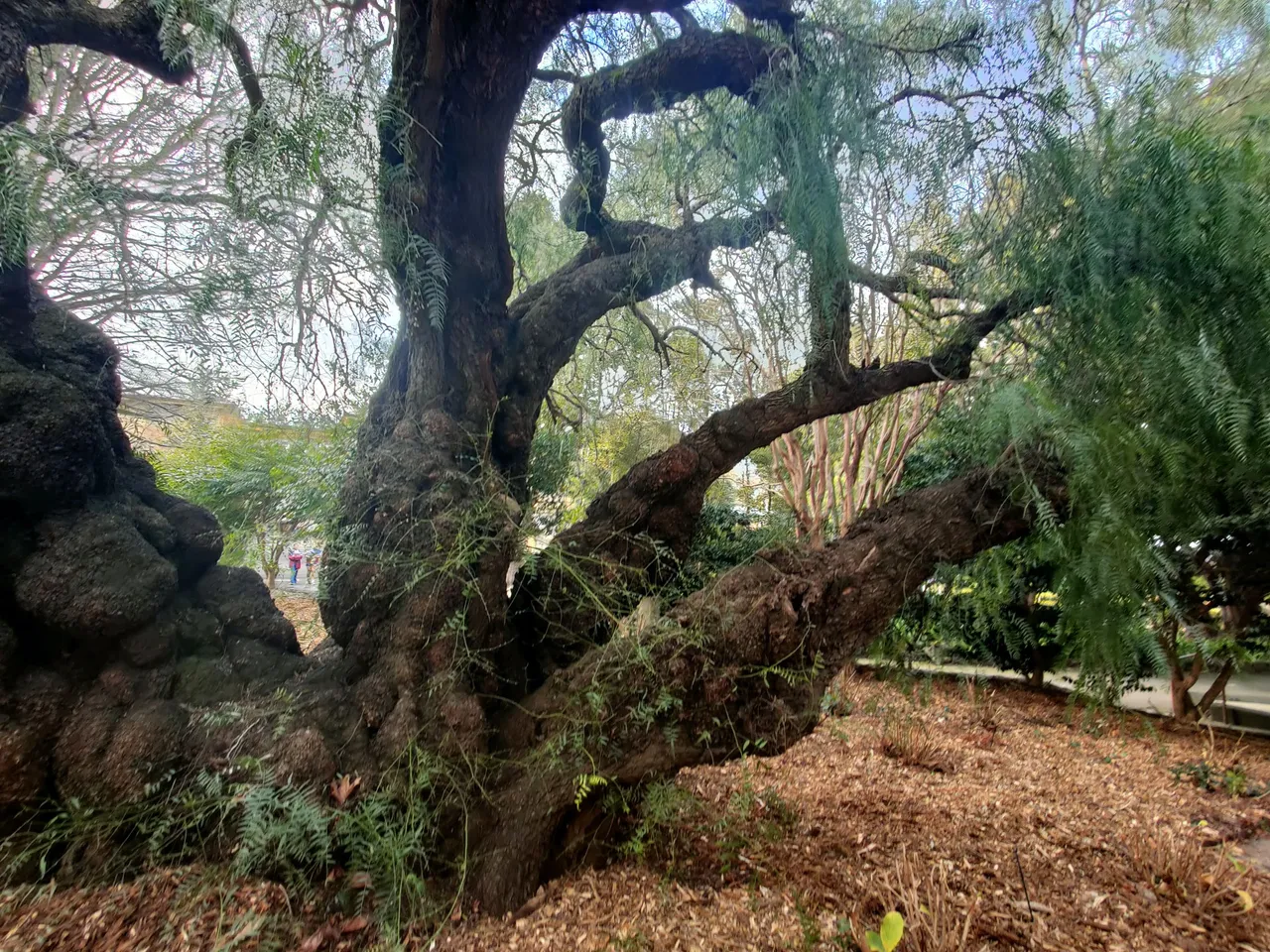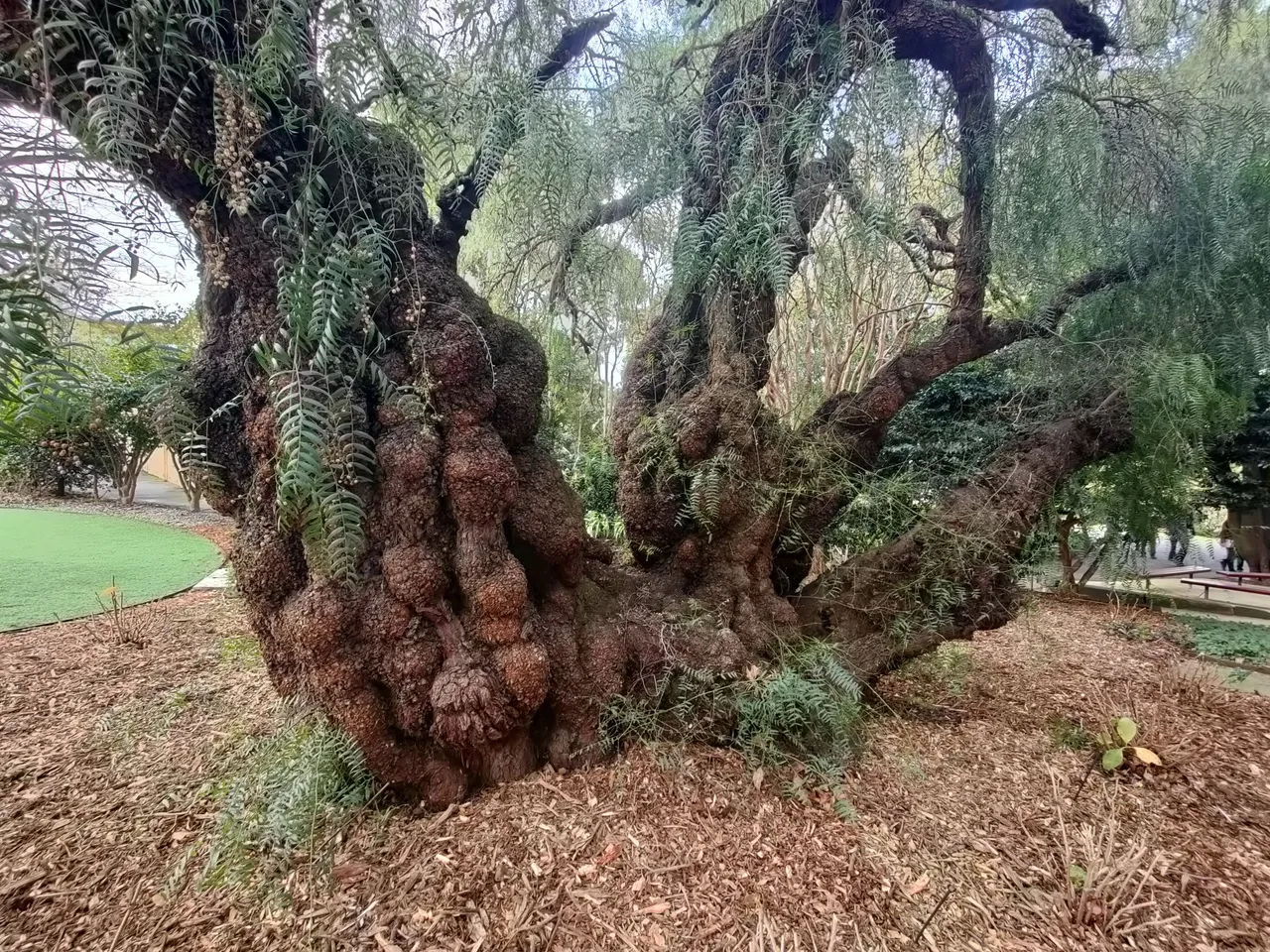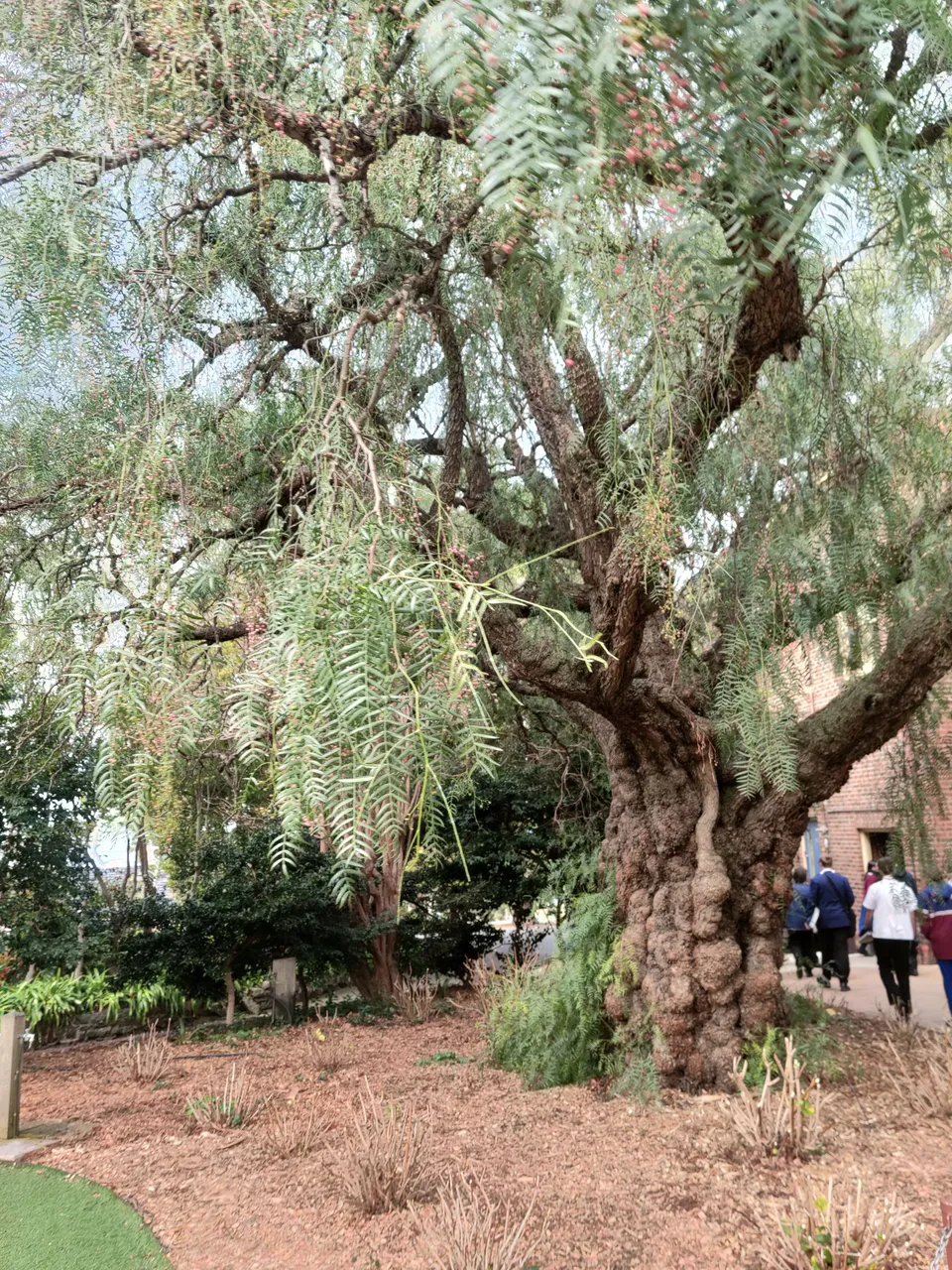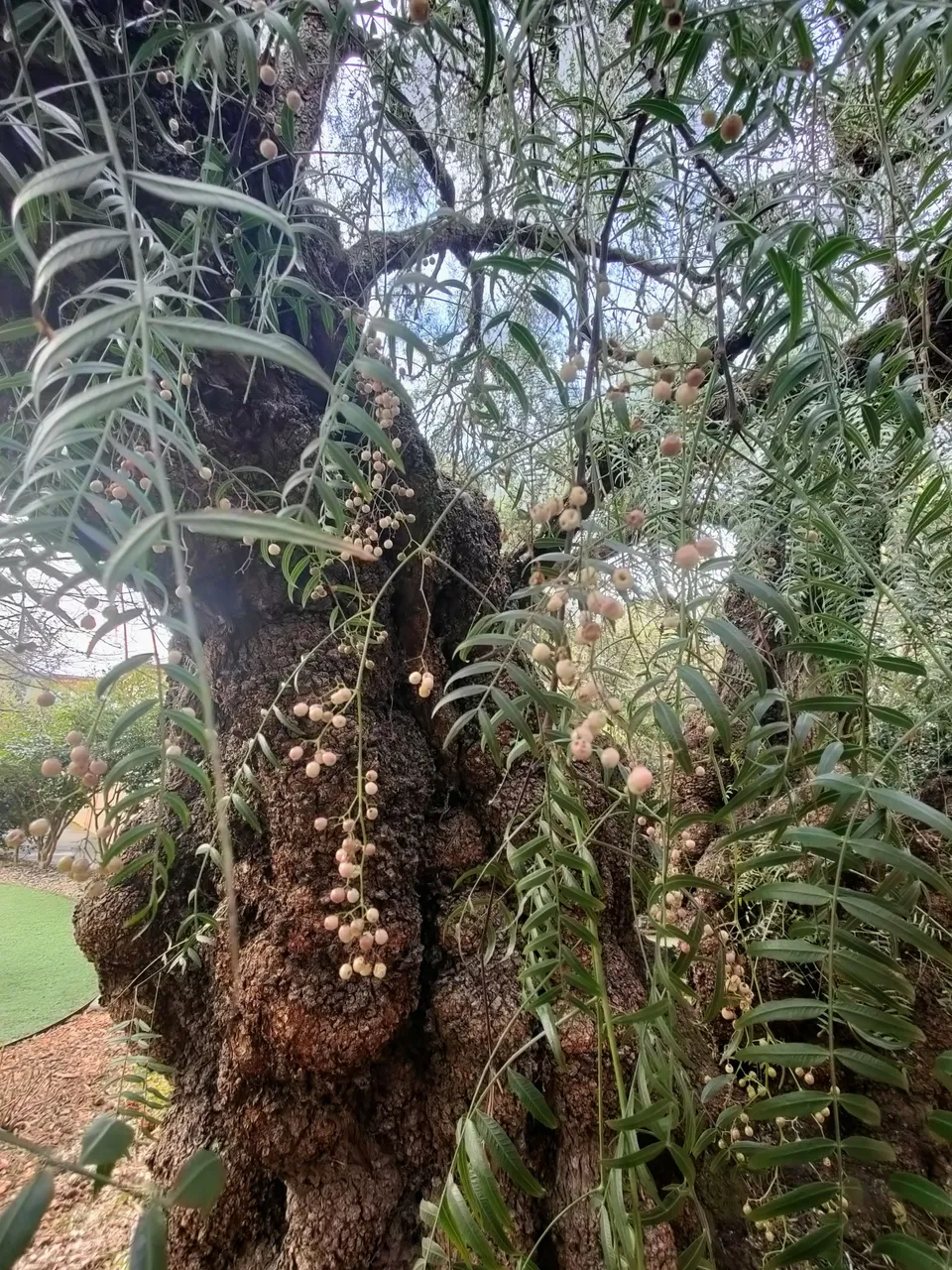In the grounds of the school I work at as an emergency or supply teacher - infrequently, at the moment, sadly - there's a gnarled, twisted pepper tree. I'm not sure what species it is - both in Australia are introduced from South America, but have become naturalised, meaning they have wild populations often near waterways.
It was actually really common to plant peppercorn trees back in the day here in Australia, from the late 1800's. They were known to have weeping foliage to provide shade, and many of the old folk remember them at their own schools. I wonder how old this tree is - probably really old, since the original school started here in 1920. The site was known to have sandy soils, so the peppercorn would have thrived here. The original homestead that used to be here predated the school to the 1860s. Peppercorn trees can live to 80 to 150 years old, and there's one at a local university that's dated to 110 years old, so it's plausible this one is equally as old.

It's a gorgeous tree that students have, over the years, called the fairy tree, perhaps as it's something you'd see in a picture book or children's tale. Students meet each other for lunch under this tree on the artifical turf to the left of it, sheltering in it's shade.
Recently, I learnt - without giving too much away - that the area on the hill the school was built on is named after the bells they'd ring when the whites saw Aboriginals in the area, a form of defence in the frontier wars. The bell was the pride and joy of the school until it was stolen. It was also used to signal or communicate the arrival of ships into the bay below, to warn of bushfires and other dangers, or to co-ordinate other rural activities and messages - a kind of bush telegraph. But the evidence that it was likely connected to history of colonisation, conflict, and survival means that even though the bell's been found, it's less a point of pride.

Instead, things like the old main house and the pepper tree are spoken off fondly instead.
There's also a magnificent copper beech that's right outside the staffroom - it provides shade for the staff in summer. Usually staffrooms are stuffy and hot and horrible, and there's no where else to go, but the students at this school are respectful of staff allocated spaces like under the copper beech, so the staff sit out there for lunch and socialising where they can grab twenty minutes or so.


Of course, there are other green things in the school too - potted plants with human names like Terry and Angelina on windowsills, gifted by leaving staff or brought in by nature lovers. There's hedges of coastal rosemary, lovely big gum trees bordering on the highway, and where I sit writing this post, various trees in the distance, and then the bay itself, glittering in the sunlight.

But the pepper tree is my favourite.
This post was written in response to the #hivegardenqotw this week. This challenge comes out in the Hive Garden every weekend, so follow the @gardenhive. This week it asks that you look at gardens or greenery at your place of work - this could be a school, university or office, or wherever you work. Looking forward to reading your responses!
With Love,


Join The Hive Garden Community! The HIVE GARDEN COMMUNITY supports gardening, homesteading, cannabis growers, permaculture and other garden related content. Delegations to the curation account, @gardenhive, are welcome! Find our community here!
Are you on HIVE yet? Earn for writing! Referral link for FREE account here!